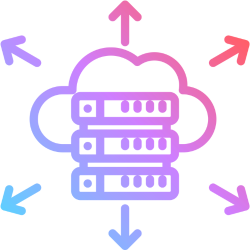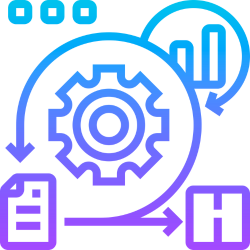 Large organizations in Australia have long required robust and adaptable solutions to navigate complex operations in this ever-evolving business environment. From its early days as a penal colony to its emergence as a global economic powerhouse, Australia has always been a land of innovation and resilience. The unique challenges presented by its vast geography, diverse industries, and dynamic market conditions have fostered a distinct need for tailored solutions.
Large organizations in Australia have long required robust and adaptable solutions to navigate complex operations in this ever-evolving business environment. From its early days as a penal colony to its emergence as a global economic powerhouse, Australia has always been a land of innovation and resilience. The unique challenges presented by its vast geography, diverse industries, and dynamic market conditions have fostered a distinct need for tailored solutions.
Enterprise software development in Australia fulfills this critical need by crafting custom software applications specifically designed to address each organization’s unique challenges. Over the decades, Australian businesses have thrived by leveraging technology to overcome hurdles such as remote operations, regulatory complexities, and sector-specific demands. These tailored programs go beyond generic solutions, becoming the cornerstone of efficient operations and streamlined workflows. They encapsulate the spirit of Australian ingenuity, offering businesses a significant competitive advantage in both domestic and international markets. As a result, enterprise software development is not just a service but a vital part of Australia’s business fabric, driving innovation and sustaining economic growth.
What is Enterprise Software Development?
It is the process of creating robust software applications that help businesses streamline their activities, improve efficiency, and enhance productivity. These extensive programs are customized to fit the specific requirements of each organization.
Understanding Enterprise Solutions
Enterprise software development focuses on creating custom-built applications that empower large organizations. These specialized programs tackle complex tasks and streamline operations, enhancing efficiency and productivity. Unlike generic software, enterprise solutions are meticulously crafted to seamlessly integrate with existing systems, manage massive data volumes, and prioritize robust security. They encompass a wide range of functionalities, including but are not limited to:
- Customer Relationship Management (CRM): Fostering stronger customer relationships through efficient data management and communication tools.
- Enterprise Resource Planning (ERP): Integrating various business functions like finance, inventory, and production into a single, unified system.
- Supply Chain Management (SCM): Optimizing the flow of goods and materials throughout the supply chain system by ensuring timely deliveries and cost reduction.
These are just a few examples, and the possibilities are vast. Enterprise software development caters to the unique needs of each organization, acting as the digital backbone that propels them towards success.
Importance of Enterprise Software

Enterprise software has become an indispensable tool for large organizations. Investing in enterprise software development empowers large organizations to navigate the complexities of modern business, ultimately propelling them towards sustainable growth and success. Here’s how it elevates business operations:
- Streamlined Workflows: Automating repetitive tasks frees up employees to focus on more strategic initiatives.
- Enhanced Data Management: Critical information is meticulously organized and readily accessible, facilitating informed decision-making.
- Improved Communication and Collaboration: Seamless information flow fosters collaboration across departments, leading to a unified approach.
- Data-Driven Insights: Built-in analytics tools empower management to make informed choices based on real-time data.
- Competitive Advantage: By fostering efficiency and productivity, enterprise software provides a significant edge in the marketplace.
Enterpise Software Development - Key Technologies
Key technologies in enterprise software development are crucial for Australian businesses, helping them navigate the country’s unique operational challenges and diverse market needs. These technologies drive innovation and efficiency, empowering organizations to stay competitive.
Cloud Computing
 Cloud computing has revolutionized enterprise software development in Australia. By moving away from bulky on-premise servers, businesses can access software applications and store data over the internet, unlocking several advantages:
Cloud computing has revolutionized enterprise software development in Australia. By moving away from bulky on-premise servers, businesses can access software applications and store data over the internet, unlocking several advantages:
Effortless Scaling: Cloud resources can be easily adjusted up or down to meet changing business requirements, eliminating the need for constant hardware upgrades.
Cost Savings: Businesses only pay for the resources they use, avoiding the upfront costs of expensive hardware and software licenses.
Ubiquitous Accessibility: Applications and data become accessible from any internet-connected device, fostering remote work and seamless collaboration among teams.
Enhanced Security: Leading cloud providers offer robust security features to safeguard sensitive data, giving businesses peace of mind.
The shift to cloud-based solutions is transforming enterprise software development, enabling the creation of more agile and adaptable applications.
Benefits of Cloud-based Enterprise Solutions
Building on the foundation of cloud computing, these are some of the specific benefits that cloud-based enterprise solutions offer:
- Disaster Recovery Made Easy: Cloud backups ensure business continuity even in the chances of hardware failures or natural disasters, keeping operations running smoothly.
- Real-Time Collaboration: Cloud-based solutions facilitate effortless collaboration on projects in real-time, regardless of location or time zone.
- Faster Deployment: Cloud applications can be deployed much quicker than traditional on-premise software, accelerating the implementation of new solutions.
- Automated Software Maintenance: Cloud providers take charge of software updates automatically, guaranteeing that businesses have constant access to the most new features and security patches.
- Implementing Cloud Infrastructure: Key Considerations
When implementing a cloud infrastructure for enterprise software development, here are some key areas to consider:
- Selecting the Ideal Cloud Partner: Various cloud providers offer diverse options in pricing, security features, and service availability. Choosing the right provider is very important for a successful implementation.
- Prioritizing Security: Implementing stringent security measures is imperative to safeguard the sensitive data stored in the cloud. This may entail deploying encryption protocols and access controls.
- Migration Planning: Strategizing the migration of existing applications to the selected cloud platform can be intricate. Thorough planning is essential for a seamless transition. Understanding these factors will assist businesses in navigating the adoption of a cloud-based approach for their enterprise software development requirements.
Artificial Intelligence (AI) in Enterprise Software
 Artificial Intelligence (AI) is transforming enterprise software by enabling more intelligent and autonomous systems. AI-driven applications can analyze big amounts of data, identify patterns, and make predictions, thereby enhancing decision-making processes and operational efficiency. This technology helps businesses automate complex tasks, improve customer experiences, and unlock a plethora of new opportunities to grow!
Artificial Intelligence (AI) is transforming enterprise software by enabling more intelligent and autonomous systems. AI-driven applications can analyze big amounts of data, identify patterns, and make predictions, thereby enhancing decision-making processes and operational efficiency. This technology helps businesses automate complex tasks, improve customer experiences, and unlock a plethora of new opportunities to grow!
Machine Learning Applications in Enterprise Software Development
Machine Learning (ML), a subset of AI, plays a crucial role in enterprise software development. ML algorithms learn from historical data to provide insights, predict outcomes, and optimize processes. In an enterprise setting, ML can be used for predictive maintenance, fraud detection, personalized marketing, and demand forecasting, among other applications. By integrating ML into their software solutions, businesses can achieve higher levels of innovation and competitiveness.
Agile Methodologies in Enterprise Software Development
This section explores Agile methodologies, a project management approach that is revolutionizing the way large organizations approach enterprise software development.
Introduction to Agile Development
 Traditional software development often involved lengthy planning cycles and rigid structures. Agile development offers a refreshingly different approach. It emphasizes flexibility, collaboration, and continuous improvement. Projects are broken down into smaller, iterative cycles called sprints, allowing for faster feedback loops and adjustments based on real-time needs.
Traditional software development often involved lengthy planning cycles and rigid structures. Agile development offers a refreshingly different approach. It emphasizes flexibility, collaboration, and continuous improvement. Projects are broken down into smaller, iterative cycles called sprints, allowing for faster feedback loops and adjustments based on real-time needs.
Agile Principles and Values
The following principles foster a more dynamic and responsive development environment that is well-suited for the ever-evolving needs of large organizations:
- Customer-centric Approach: Placing paramount importance on understanding and addressing the needs and satisfaction of the customer throughout the development journey.
- Adaptability: Agile teams embrace changes in requirements, acknowledging that such adaptability leads to the creation of superior software.
- Iterative Progression: Employing short, iterative cycles fosters continuous delivery and feedback loops, ensuring swift progress and refinement.
- Collaborative Efforts: Encouraging collaboration among cross-functional teams to collectively deliver high-quality software solutions.
- Commitment to Excellence: Agile teams uphold a culture of continuous improvement, constantly striving to enhance every facet of the development process.
Agile Methodologies:
Agile isn’t a one-size-fits-all approach. Several popular Agile methodologies exist, each with its own strengths and workflows. Here are a couple of prominent examples:
Scrum: Teams work in fixed-length sprints (typically 2-4 weeks) to deliver working software increments. Scrum emphasizes clear roles, ceremonies like daily stand-up meetings, and a prioritized backlog of tasks.
Kanban: This methodology focuses on visualizing workflow with a Kanban board. Tasks are represented by cards that move through different stages of completion, providing a clear overview of progress and potential bottlenecks.
Implementing Agile in Large Enterprises: While Agile is often associated with startups, this subsection will delve into strategies for successful Agile adoption within large, established organizations.
Scaling Agile for Enterprise Projects: Scaling Agile methodologies for large-scale enterprise projects presents unique challenges. This subsection will explore frameworks like SAFe (Scaled Agile Framework) that address these challenges.
Overcoming Challenges in Agile Adoption: No approach is without its hurdles. This subsection will explore some of the common challenges faced by organizations transitioning to Agile and offer strategies to overcome them.
Security Considerations in Enterprise Software
With the ever-growing reliance on digital solutions, robust security becomes paramount for enterprise software development. Let’s explore the critical security considerations that must be addressed throughout the development lifecycle.
Cybersecurity Threats in Enterprise Environments
 Given the vast amounts of sensitive data handled by large organizations, they become prime targets for cyberattacks. Understanding these threats is paramount for implementing cybersecurity measures. Here are some prevalent risks:
Given the vast amounts of sensitive data handled by large organizations, they become prime targets for cyberattacks. Understanding these threats is paramount for implementing cybersecurity measures. Here are some prevalent risks:
Data Breaches: Unauthorized access to sensitive data like customer information or financial records poses a significant threat.
Malware Attacks: Malicious software designed to illegally fetch data, disrupt operations, or hold systems hostage can wreak havoc on enterprise environments.
Phishing and Social Engineering: Deceptive tactics are employed to trick employees into sharng sensitive information or clicking on malicious links, making phishing and social engineering threats to be vigilant against.
Denial-of-Service (DoS) Attacks: Overwhelming a system with traffic, rendering it unavailable to legitimate users, represents a serious threat to enterprise continuity and operations.
Enterprise Software Development - Common Security Vulnerabilities
- Injection Attacks: Inserting malicious code into user input fields to gain unauthorized access to systems.
- Broken Authentication: Weak passwords, insecure login protocols, and lack of multi-factor authentication.
- Insecure Coding Practices: Programming errors that create security gaps in the software.
- Outdated Software: Failure to patch vulnerabilities in software can leave systems exposed.
Enterprise software development teams must prioritize secure coding practices and stay vigilant about patching vulnerabilities in software libraries and frameworks.
Best Practices for Securing Enterprise Systems
By adhering to the following best practices, organizations can strengthen the security posture of their enterprise software systems. Here are some key security best practices to follow throughout the software development lifecycle:
- Secure Coding Methodologies: Incorporating secure coding principles and employing code analysis tools to detect and rectify vulnerabilities in software.
- Data Protection Measures: Utilizing encryption techniques to safeguard sensitive data both while stored and during transmission, ensuring protection even if intercepted.
- Granular Access Management: Enforcing robust access controls to limit system and data access based on the principle of least privilege, enhancing security posture.
- Continuous Security Assessment: Conducting routine penetration testing and vulnerability assessments to proactively identify and remediate security flaws.
- Employee Security Education: Providing comprehensive cybersecurity training to staff members to mitigate the likelihood of falling victim to social engineering tactics.
- DevSecOps Integration: Integrating security practices throughout the entire software development lifecycle (DevSecOps) ensures security is not an afterthought but a continuous process.
- Compliance and Regulatory Requirements: Many industries have regulations governing data privacy and security. This subsection will explore relevant regulations like GDPR and CCPA and how to ensure compliance within enterprise software.
- Ensuring Compliance in Enterprise Software: Strategies and best practices for developing and deploying enterprise software that adheres to compliance requirements will be discussed in this subsection.
Enterprise Software Development - DevOps Practices
 Efficient delivery pipelines are always crucial. This section explores DevOps, a set of practices and philosophies that bridge the gap between development (Dev) and operations (Ops) teams, fostering collaboration and accelerating software delivery.
Efficient delivery pipelines are always crucial. This section explores DevOps, a set of practices and philosophies that bridge the gap between development (Dev) and operations (Ops) teams, fostering collaboration and accelerating software delivery.
Introduction to DevOps
Traditionally, development and operations teams often functioned in silos, leading to inefficiencies and bottlenecks in the software delivery process. DevOps strives to break down these silos by nurturing a culture of collaboration and responsibility. Developers and operations personnel work together throughout the entire lifecycle, from planning and coding to deployment and monitoring.
DevOps Principles and Culture
At the heart of DevOps lies a set of core principles that promote collaboration and continuous improvement:
- Shared Responsibility: Both Dev and Ops teams share responsibility for the entire software lifecycle, fostering a sense of ownership.
- Continuous Integration (CI): Frequent code changes are integrated into a central repository, allowing for early detection and resolution of bugs.
- Continuous Delivery (CD): Automated processes streamline the deployment of software updates, minimizing downtime and risk.
- Infrastructure as Code (IaC): Adopting the practice of managing infrastructure through code enables automated provisioning and configuration management, promoting consistency and repeatability across deployments.
- Monitoring and Feedback: Continuous monitoring of deployed applications provides valuable feedback for improvement in future iterations.
By embracing these principles, organizations can cultivate a DevOps culture that prioritizes collaboration, automation, and continuous improvement.
Benefits of DevOps Adoption
Adopting DevOps practices can offer significant benefits for enterprise software development:
- Faster Time to Market: Streamlined workflows and automated deployments allow for quicker delivery of new features and functionalities.
- Improved Software Quality: Continuous integration and automated testing lead to higher-quality software releases.
- Reduced Costs: Automation reduces manual effort and rework, leading to cost savings.
- Increased Innovation: Faster delivery cycles free up resources for innovation and experimentation.
- Enhanced Collaboration: DevOps fosters closer collaboration between Dev and Ops teams, leading to better communication and problem-solving.
These benefits make DevOps a compelling approach for organizations seeking to optimize their enterprise software delivery process.
Automating Software Deployment Pipelines
A core concept in DevOps is automating the software deployment pipeline. This pipeline consists of a series of automated steps that take code from development to production. These steps might include:
- Building and testing the code: Automating code compilation, unit testing, and integration testing ensures code quality before deployment.
- Packaging the software: Automated packaging ensures consistency and facilitates deployment across different environments.
- Deploying to staging environments: Staging environments allow for thorough testing before pushing updates to production.
- Deploying to production: Automated deployments minimize downtime and ensure consistency.
By automating these steps, organizations can achieve faster and more reliable software deployments.
Tools for CI/CD in Enterprise
Several powerful tools are available to support CI/CD pipelines and DevOps practices within enterprise software development. Here are some examples:
- Version Control Systems (VCS): Tools like Git allow for code versioning and collaboration.
- Continuous Integration Servers: Tools like Jenkins automate the build, test, and deployment process.
- Configuration Management Tools: Tools like Ansible or Puppet automate infrastructure provisioning and configuration.
- Containerization Technologies: Technologies like Docker package applications and their dependencies for consistent deployments across environments.
These tools, along with a DevOps culture and mindset, empower organizations to streamline their enterprise software delivery process.
Enterprise Software Development - Future Trends
 Several innovative technologies hold immense potential for transforming enterprise software development. Here are a few key areas to consider:
Several innovative technologies hold immense potential for transforming enterprise software development. Here are a few key areas to consider:
Quantum Computing: Despite being in its nascent phase, quantum computing holds immense promise to transform the landscape of complex data analysis and problem-solving within enterprise software applications.
Low-code/No-code Development Platforms: These tools enable users with minimal coding experience to develop applications, potentially democratizing software development within organizations.
Blockchain and Distributed Ledger Technology (DLT): Blockchain technology, known for its applications in cryptocurrencies, offers unique possibilities for enterprise software development. DLT allows for secure, transparent, and decentralized data sharing, which can be transformative in areas like supply chain management and secure data collaboration.
Internet of Things (IoT) in Enterprise: The ever-growing network of connected devices presents exciting opportunities for enterprise software development. Integrating IoT enables organizations to gather and analyze data in real-time, facilitating process optimization, enhanced resource utilization, and the extraction of valuable insights from interconnected devices.
Evolving Practices and Paradigms
Beyond specific technologies, the way we approach enterprise software development is also undergoing a shift. Here are some evolving practices to keep an eye on:
- Shift towards Serverless Architectures: Serverless computing allows developers to focus on application logic without being worried about server infrastructure management. This can lead to increased scalability and agility.
- Microservices Architecture: Breaking down large applications into smaller, independent microservices can improve development speed, maintainability, and fault tolerance.
These evolving practices can enhance the efficiency and flexibility of enterprise software development.
Enterprise Software Development - Importance of User Experience (UX)
 Traditionally, enterprise software may have prioritized functionality over user experience. However, the importance of a user-centric approach is gaining recognition. Intuitive and user-friendly interfaces can significantly improve employee adoption rates, boost productivity, and enhance the overall user experience within organizations.
Traditionally, enterprise software may have prioritized functionality over user experience. However, the importance of a user-centric approach is gaining recognition. Intuitive and user-friendly interfaces can significantly improve employee adoption rates, boost productivity, and enhance the overall user experience within organizations.
By embracing these future trends and remaining adaptable, organizations can leverage the power of enterprise software development to navigate the ever-changing digital landscape and achieve sustainable success.
Transforming Enterprises with Tailored Software Development at Experion
Being an enterprise software development company, At Experion, our focus is on assisting you with enterprise software development. We understand the importance of tailored solutions that streamline workflows and enhance collaboration for organizational success. Leveraging the most valued technologies such as cloud computing, AI, and DevOps, we ensure that your solutions are innovative and efficient. Our commitment to robust security measures guarantees the integrity and
confidentiality of your sensitive data. Moreover, we adapt to emerging trends like low-code platforms and IoT to enhance your organizational agility. By prioritizing user experience, we aim to foster employee adoption and boost productivity, giving your business a competitive edge in both local and global markets through our enterprise software development services. Our dedication to continuous improvement and market responsiveness ensures that we support your sustained success as we propel your organization towards sustainable growth.
Key Takeaways
1. Tailored solutions offered by enterprise software streamline workflows and enhance collaboration.
2. These solutions drive innovation and efficiency in a dynamic business landscape.
3. Technologies like cloud computing, AI, and DevOps are transforming enterprise software development.
4. Robust security measures ensure the integrity and confidentiality of sensitive data.
5. Adapting to emerging trends like low-code platforms and IoT enhances organizational agility.
6. Prioritizing user experience fosters employee adoption and boosts productivity.
7. Australian businesses benefit from the competitive edge provided by enterprise software solutions.
8. Continuous improvement and staying attuned to market needs are essential for sustained success.
9. Enterprise software development propels organizations towards sustainable growth in domestic and international markets.

